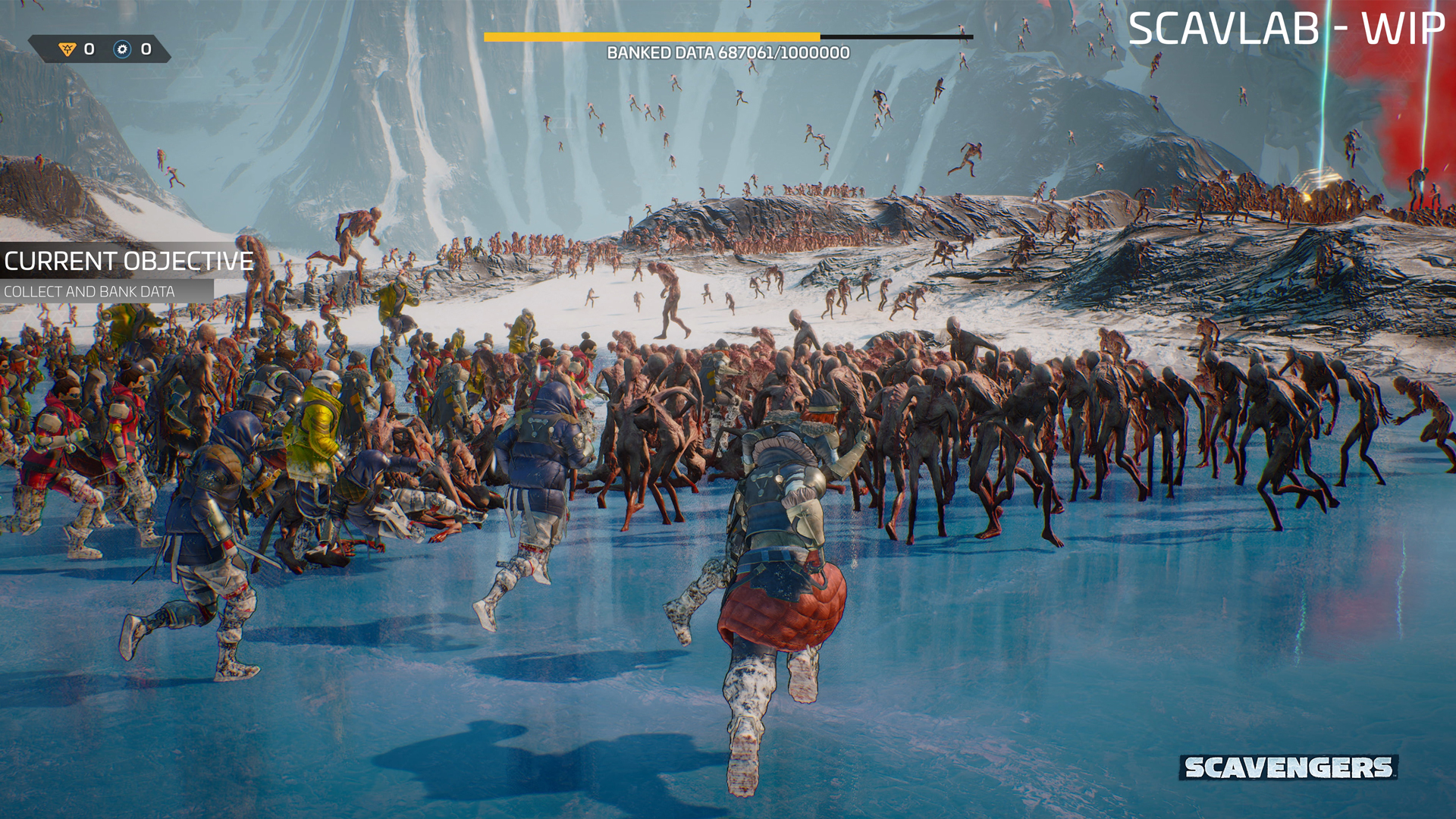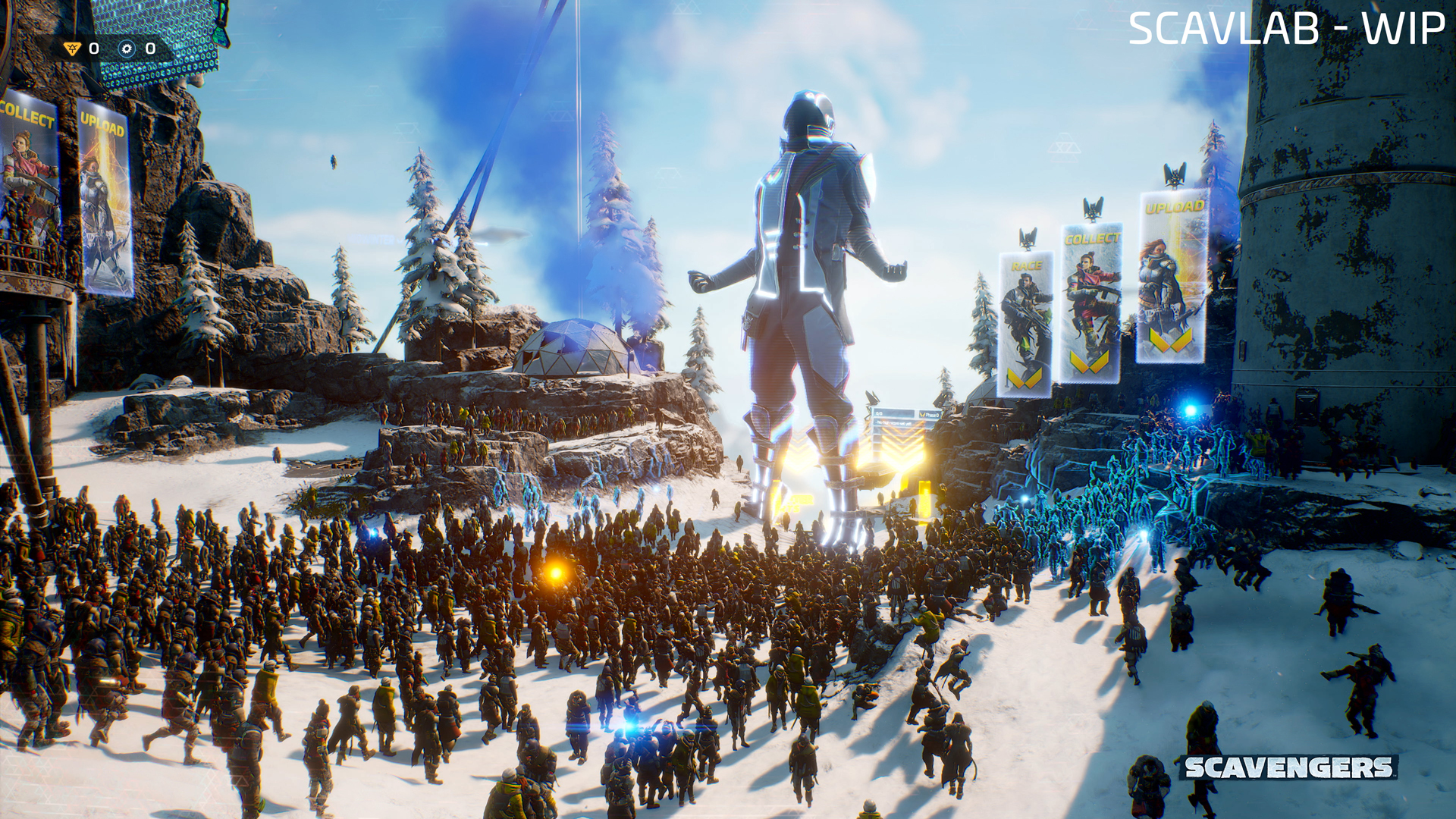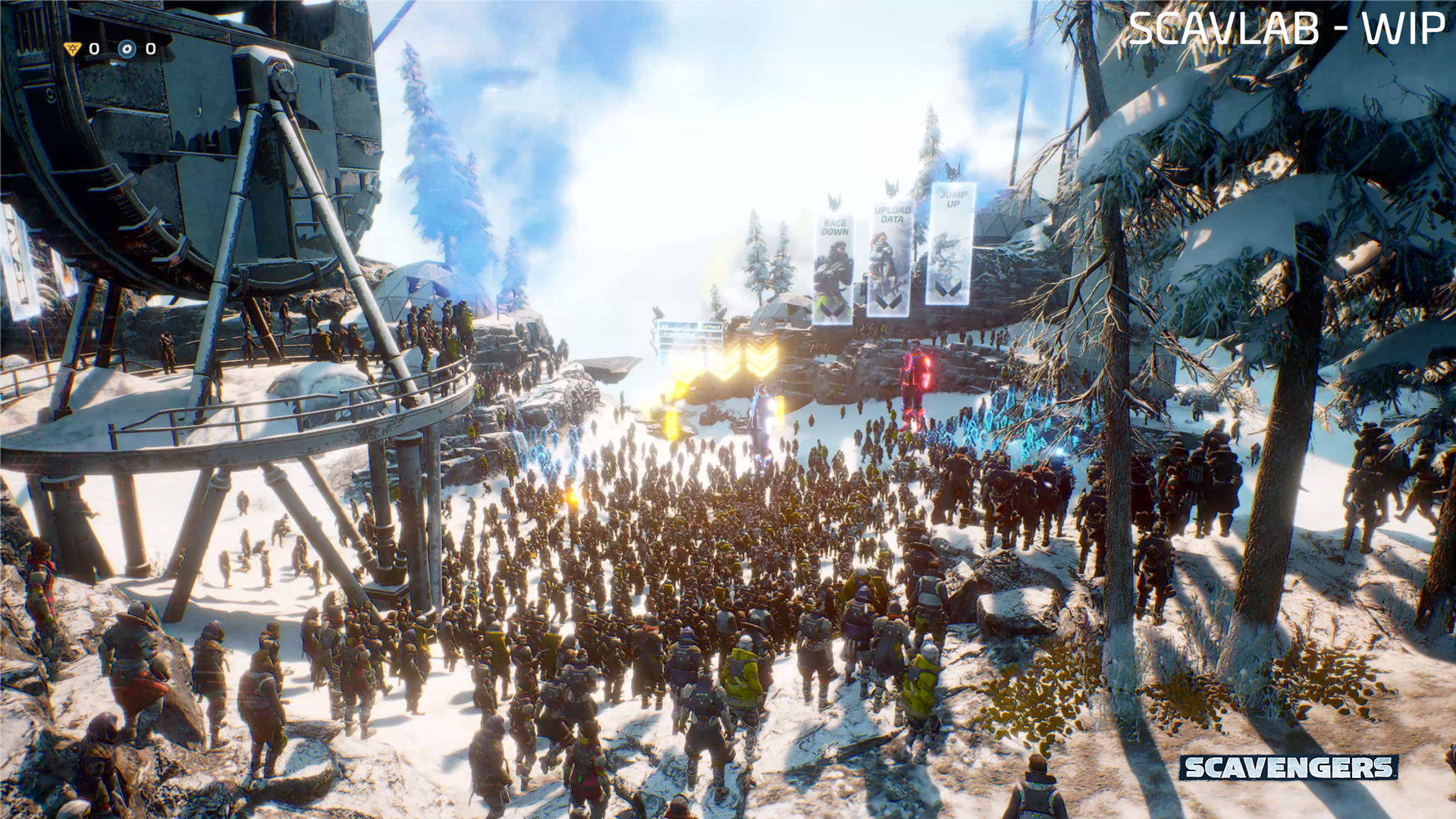
What happens when over 4,000 real players pour into the same live environment? You'd expect it to be pure chaos, right? The sort of live-service experiment that slowly unfurls at five frames-per-second, your avatar adrift amidst a sea of grifters and griefers. That was my expectation after two decades of experience playing games online. Against all odds, Scavengers has shown that player behavior and networking technology is starting to catch up with developer ambition in the multiplayer space, and it's fascinating to experience in real-time.
Before we get into what developer Midwinter Entertainment was able to achieve with its experimental ScavLab sandbox this weekend, and what that may mean for the future of live-service experiences, perhaps it's worth reflecting on any lingering hesitancy associated with joining 4,000 players running amok in one lobby. Maybe you've heard the stories about EVE Online and wonder whether that many players could ever harmoniously coexist on a single server shard. Perhaps you too remember the carnage of Planetside 2 and its thousand-player battles, a mess of wayward bullets and lackluster latency. There's a chance you're coming to this having seen the carnage wrought by Call of Duty: Warzone upping its player-count to 200 in Verdansk for one disastrous limited-time event, or after experiencing the hell of other players when Fortnite trades battle for party royale.
Regardless of your experiences, you probably know that online servers can be competitive, combative spaces. They've been that way ever since Doom allowed us to hide behind anonymity and a rocket launcher. So Midwinter took the initiative, and switched combat off entirely as it welcomed thousands of players into the limited-time ScavLab game mode, as towering holographic studio representatives instructed the fledgling Scavengers community to take up formations, flash emotes in unison, and predict the winner of the UEFA Champions League final by waving glow sticks in the air to create a sea of ocean blue – a prediction that would later come true.
I've never seen a large crowd of people so well behaved. The reps corral us into two groups of two-thousand before we're pushed down a mountainside and asked to take advantage of Scavenger's wicked slide mechanic – one of the best in the business, and reason enough to check the game out in Early Access – to collect data canisters and bank the points, hitting boost pads and ramps as we go. Thousands of players moved at speed from the summit to the base before teleporting back to the top for another round, like kids desperately racing to enjoy their favorite ride at a theme park before a queue forms and forces them to move onto the next.
A whole mess of people





From a distance, it looked like an avalanche was swallowing Trinity Mountain. Getting up in it, it's all a little bemusing; there's a delightful novelty to seeing so many players – so many real people – engaged in one activity simultaneously and I couldn't begin to tell you what the half-life of that feeling is, but I hope it doesn't fade too quickly. Later, we form ranks around a frozen lake in our teams as Midwinter thrusts melee weapons into our hands and summons thousands of AI monsters into the center of the lake. Seconds later, we're tripping over ourselves to charge through them – waves of players filling every inch of the screen, crashing against ranks of enemies, swinging bats, and pushing towards a dropship that would exfil us from the arena and bring the ScavLab experiment to an end.
The enemy AI isn't balanced to survive against this many players, and Midwinter's attempts to scale the challenge up in real-time does little to stop the tide of carnage. It's the sort of scene you'd expect to see play out in a massive-scale Total War re-enactment, or that you may have idled through in Dynasty Warriors. Your interaction with this scene is minimal, but the scale is the point. The scale is impactful. The implications for the future of live-service events are even more so.
"The way you can think of ScavLab is as an experimental community space where we can run events with massive numbers of players, try out new mechanics, mini-games, and modes, and also stress test which everyone is helping us with here today," says Josh Holmes, creative director of Scavengers talking directly to the community in real-time as a floating avatar. "It's also a glimpse into our future vision for Scavengers, and how we can leverage increased scale to do some pretty amazing things. Depending on your feedback, some of the things that we experiment with here may make their way into a core game mode for Scavengers."
Weekly digests, tales from the communities you love, and more
How that will materialize is anybody's guess. Scavengers is currently free-to-play in early access, a hybrid between traditional battle royale systems and survival game metrics that has 60 players working to scavenge equipment and resources, get equipped with signature gear, and survive against rival player teams and hordes of AI enemies patrolling the frozen wasteland. It's difficult to see the core Scavengers survival experience scaling to 4,000 players, or even more than that, as we're yet to see the full extent of Midwinter's ambition in the cloud-game space or Improbable's SpatialOS tech powering it all. You could imagine a scenario where the studio felt confident in increasing the AI footprint across the core map, though, or engineering a mode where rival players were forced into uneasy alliances to take down roving armies of enemies.
The ScavLab test was an impressive flex of Improbable's networking technology and the community that is steadily forming up around Scavengers in early access – Holmes was eager to shout about the game crossing the one million player threshold in the game's first month on Steam. Seeing 4,000 players running around in real-time, with minimal disruption (the game crashed out as the player-count pushed towards 5k, but was otherwise surprisingly latency-free for me), shows that there's still scope for live service environments and experiences to evolve. Fortnite is only scratching the surface of possibilities in this space and it'll be exciting to see what disruptive developers do with massive player counts moving forward. But here's the thing: pulling 4,000 players together is the easy part, what you do with them all is still a frontier that needs to be conquered.

E3 2021 is coming up quick and we're expecting plenty of announcements from the biggest game makers in the world. For more information on the all-digital event, check out our E3 2021 schedule.

Josh West is the Editor-in-Chief of GamesRadar+. He has over 15 years experience in online and print journalism, and holds a BA (Hons) in Journalism and Feature Writing. Prior to starting his current position, Josh has served as GR+'s Features Editor and Deputy Editor of games™ magazine, and has freelanced for numerous publications including 3D Artist, Edge magazine, iCreate, Metal Hammer, Play, Retro Gamer, and SFX. Additionally, he has appeared on the BBC and ITV to provide expert comment, written for Scholastic books, edited a book for Hachette, and worked as the Assistant Producer of the Future Games Show. In his spare time, Josh likes to play bass guitar and video games. Years ago, he was in a few movies and TV shows that you've definitely seen but will never be able to spot him in.


